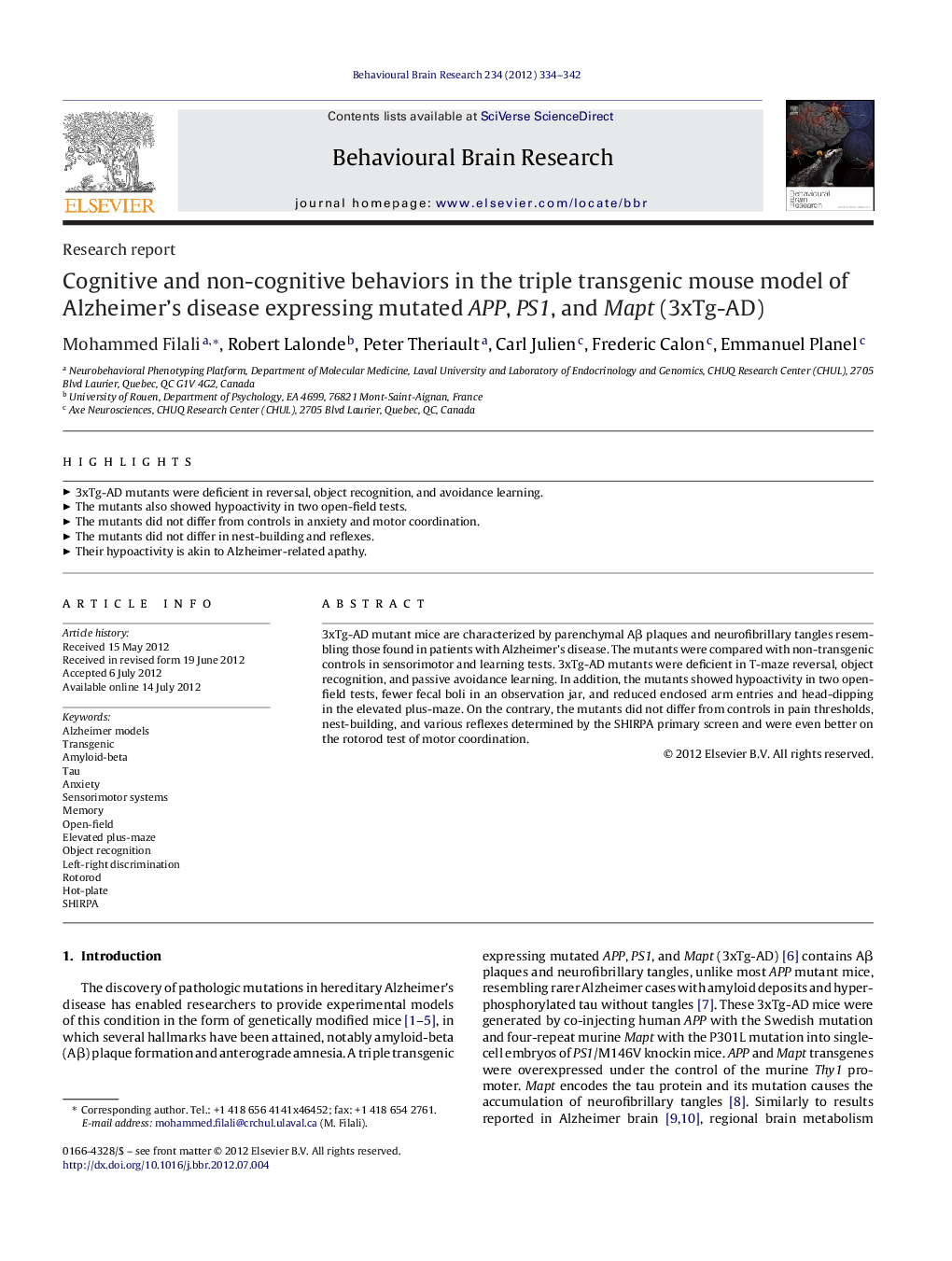| Article ID | Journal | Published Year | Pages | File Type |
|---|---|---|---|---|
| 4312960 | Behavioural Brain Research | 2012 | 9 Pages |
3xTg-AD mutant mice are characterized by parenchymal Aβ plaques and neurofibrillary tangles resembling those found in patients with Alzheimer's disease. The mutants were compared with non-transgenic controls in sensorimotor and learning tests. 3xTg-AD mutants were deficient in T-maze reversal, object recognition, and passive avoidance learning. In addition, the mutants showed hypoactivity in two open-field tests, fewer fecal boli in an observation jar, and reduced enclosed arm entries and head-dipping in the elevated plus-maze. On the contrary, the mutants did not differ from controls in pain thresholds, nest-building, and various reflexes determined by the SHIRPA primary screen and were even better on the rotorod test of motor coordination.
► 3xTg-AD mutants were deficient in reversal, object recognition, and avoidance learning. ► The mutants also showed hypoactivity in two open-field tests. ► The mutants did not differ from controls in anxiety and motor coordination. ► The mutants did not differ in nest-building and reflexes. ► Their hypoactivity is akin to Alzheimer-related apathy.
